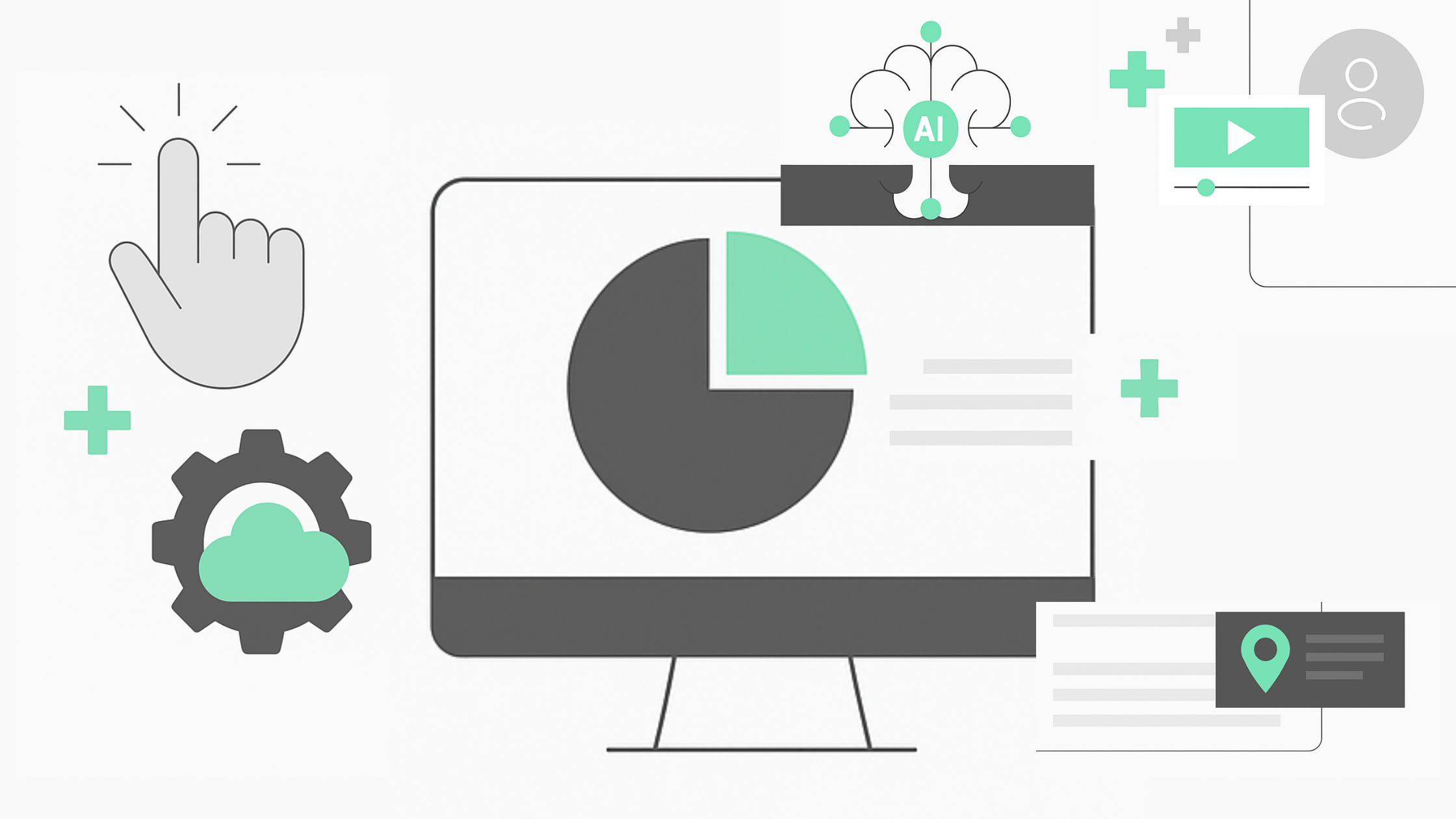HIPAA-Compliant Website Design: Healthcare Checklist (2024)
In today’s digital space, healthcare providers are increasingly moving their services online, making websites an essential tool for patient interaction. However, with the rise in online platforms, safeguarding sensitive patient information becomes paramount.
To address this, the Health Insurance Portability and Accountability Act (HIPAA) has set strict guidelines that healthcare websites must follow to safeguard Protected Health Information (PHI). This comprehensive guide will walk you through the crucial steps in building a HIPAA-compliant website, ensuring the highest standards of privacy, security, and regulatory compliance.
HIPAA Compliance in Web Development
HIPAA sets the standard for protecting sensitive patient information, making HIPAA compliance in website design essential for healthcare providers, insurers, and digital health platforms. Compliance is not just about meeting legal obligations—it is about fostering trust, protecting patient privacy, and ensuring that healthcare systems remain secure in the face of evolving digital threats.
For individuals, HIPAA ensures their personal health information remains confidential, giving them control over who can access their medical records. Patients are assured that their healthcare providers and related entities are legally required to protect their data from unauthorized access or breaches.
For healthcare professionals and entities, HIPAA compliance goes beyond data protection—it establishes strict standards for how electronic protected health information (ePHI) is stored, transmitted, and managed. Failure to meet these standards can lead to severe penalties, including hefty fines and legal repercussions. Professionals must adopt secure technologies, implement proper encryption, and adhere to privacy guidelines to ensure compliance.
According to the U.S. Department of Health and Human Services (HHS), HIPAA’s Privacy, Security, and Breach Notification Rules form the foundation for data protection in healthcare, ensuring that healthcare providers, insurance companies, and business associates uphold the highest standards of patient data privacy and security. Non-compliance can result in penalties ranging from $100 to $50,000 per violation, with a maximum annual fine of $1.5 million.
Do You Need a HIPAA-Compliant Website?
The first step in creating a HIPAA-compliant website is determining whether your website needs to meet HIPAA standards. If your site deals with PHI, such as patient records, appointment scheduling, or communications involving health data, it must comply with HIPAA regulations. Failure to do so can result in significant legal and financial penalties, as well as reputational damage.
Healthcare providers, insurers, and any businesses that manage PHI on behalf of healthcare providers must adhere to HIPAA standards, which aim to ensure the confidentiality, integrity, and security of patient data.
Checklist for Building a HIPAA-Compliant Medical Website
Ensuring that a healthcare website is HIPAA-compliant involves addressing both technical and administrative requirements to protect patient data.
To get it right, it’s essential to incorporate a variety of technical and procedural safeguards into the website’s design and ongoing maintenance. This includes secure hosting environments, encryption, access controls, and regular risk assessments. It’s also critical to have a response plan in place for potential security incidents and make sure that any third-party vendors working with PHI are HIPAA-compliant as well.
Here’s a checklist to guide you through the process:
- Implement SSL/TLS encryption (HTTPS) for all website pages and data transmissions
- Set up multi-factor authentication and role-based access controls for all user accounts
- Use HIPAA-compliant hosting solutions with proper data encryption at rest
- Create and maintain a comprehensive incident response and data breach notification plan
- Obtain signed Business Associate Agreements (BAAs) from all third-party services and vendors
- Implement secure forms and patient portals with encryption and proper authorization controls
- Establish a regular schedule for security assessments, penetration testing, and software updates
- Provide ongoing HIPAA compliance training for all staff involved in website management
- Set up logging and auditing mechanisms to track all access to Protected Health Information (PHI)
- Conduct annual HIPAA risk assessments and update policies and procedures accordingly
With this list, you'll be well on your way to creating a secure, compliant, and trustworthy medical website that safeguards your patients' data and keeps you compliant with HIPAA standards.
Understanding HIPAA Requirements for Healthcare Websites: PHI, HIPAA Security Rule, HIPAA Privacy Rule
When designing a healthcare website, HIPAA lays out specific regulations that require healthcare providers to follow to secure PHI.
What Constitutes "Protected Health Information" (PHI)?
Protected Health Information (PHI) refers to any identifiable health data that is collected, transmitted, or stored by a healthcare provider or related entity. This includes medical records, billing information, insurance details, and other personal health data. If your website facilitates appointment scheduling, collects patient information via forms, or hosts patient portals, you are likely dealing with PHI. HIPAA requires that all PHI be handled with stringent safeguards to prevent unauthorized access or breaches.
Examples of PHI include:
- Medical histories
- Lab results
- Prescription information
- Health insurance details
- Conversations between healthcare providers and patients regarding treatment
HIPAA’s regulations apply whenever your website is managing or transmitting any of this data. Ensuring your site is HIPAA-compliant means taking steps to protect PHI from potential breaches, unauthorized access, or improper use.
Key Components of HIPAA & How They Apply to Website Design
Two major components of HIPAA—the Security Rule and the Privacy Rule—provide the framework for how healthcare websites must be designed to ensure data security and patient privacy.
HIPAA Security Rule: What Is It?
The HIPAA Security Rule focuses on safeguarding electronic Protected Health Information (ePHI). This rule applies directly to healthcare website design and outlines how you must protect ePHI that is stored or transmitted through digital channels. Here are the key elements of the Security Rule that apply to your website:
- Data Encryption: All ePHI must be encrypted both in transit and at rest. This means that any data submitted through your website, such as through patient forms or portals, must be securely encrypted to prevent unauthorized access.
- Access Controls: Your website must implement role-based access control (RBAC) and multi-factor authentication (MFA). Only authorized users, such as healthcare staff with the proper credentials, should have access to patient data.
- Ongoing Security Measures: Regular security assessments, penetration testing, and software updates are critical to ensure your website's protection against potential vulnerabilities.
HIPAA Privacy Rule: What Is It?
The HIPAA Privacy Rule governs how PHI is used and disclosed by covered entities. It sets standards for maintaining patient privacy and requires that healthcare websites follow specific guidelines regarding the use and sharing of patient information.
- Patient Consent: Before collecting, storing, or sharing any PHI, you must have clear consent from the patient. This includes informing users of how their data will be used through privacy policies and terms of use clearly displayed on your website.
- Data Use Limitations: PHI collected via your website must only be used for its intended purpose. Whether it’s scheduling an appointment or gathering health information, you need to ensure the data is not shared or used without explicit patient consent.
- Breach Notification: If a data breach occurs, the Breach Notification Rule—which is part of HIPAA—requires that affected individuals and relevant authorities be notified promptly. Having a well-defined breach response plan is essential.
Both the Security Rule and Privacy Rule ensure that healthcare websites prioritize patient data security and privacy, creating a safe environment for the transmission and storage of sensitive health information.
Essential Security Measures for HIPAA-Compliant Websites
HIPAA’s Security Rule mandates that healthcare providers and web developers implement appropriate safeguards to ensure the confidentiality, integrity, and availability of electronic protected health information (ePHI). This involves both securing data in transit and at rest, while also protecting the servers that store sensitive information.
At the heart of these security measures are SSL certificates and encryption protocols, which play critical roles in safeguarding patient data from unauthorized access. SSL, or Secure Socket Layer, and its successor TLS (Transport Layer Security), encrypt data as it travels between a patient’s browser and the website’s server. These certificates ensure that any data transmitted between a patient’s browser and your website remains encrypted and secure preventing unauthorized access.
Beyond data in transit, you also need to focus on protecting data at rest—the information stored on your servers. Using strong encryption algorithms ensures that even if unauthorized individuals gain access to the stored data, they won’t be able to read or use it.
Partnering with a HIPAA-compliant hosting provider ensures that your infrastructure meets regulatory standards and can handle sensitive healthcare data securely.
HIPAA-Compliant Data Security Measures
- Implement SSL/TLS encryption for all data transmissions
- Use strong encryption algorithms for data at rest
- Configure firewalls to protect against unauthorized access
- Regularly update and patch all software and systems
- Implement intrusion detection and prevention systems
- Use secure, HIPAA-compliant hosting solutions
Conduct regular security audits and vulnerability assessments. This ensures that all communication involving sensitive information is protected from interception by malicious actors.
Designing HIPAA-Compliant Forms and Patient Portals
Patient portals are often the main point of contact between patients and healthcare providers online, handling sensitive information such as medical histories, lab results, and appointment scheduling. Ensuring that these portals and forms adhere to HIPAA regulations is essential to protect electronic protected health information (ePHI).
One of the most important steps in achieving compliance is securing the communication channel between patients and the website. This starts with using encrypted connections (HTTPS) to safeguard data during transmission. Additionally, forms should be designed to minimize the risk of unauthorized access by incorporating multi-factor authentication (MFA) and strong password policies for user logins.
Multi-factor authentication adds an extra layer of security by requiring users to verify their identity using more than just a password—such as through a code sent to their phone or biometric verification. This ensures that only verified individuals can access sensitive information, significantly reducing the risk of breaches.
It’s also important to implement Business Associate Agreements (BAAs) with any third-party services or vendors that handle patient data. These agreements ensure that both parties are held to HIPAA standards and share the responsibility for safeguarding ePHI.
To build HIPAA-compliant forms and portals, follow these essential guidelines:
HIPAA-Compliant Form and Portal Checklist
- Implement secure, encrypted connections (HTTPS)
- Use multi-factor authentication for user logins
- Enforce strong password policies
- Implement automatic session timeouts
- Use input validation to prevent injection attacks
- Limit failed login attempts
- Provide user activity logs and audit trails
- Ensure proper user authorization and access controls
- Implement secure data storage and transmission
- Use HIPAA-compliant third-party services (with BAAs)
Maintaining HIPAA Compliance & Responding to Incidents in Healthcare Websites
Maintaining HIPAA compliance is not a one-time task—it requires ongoing efforts to ensure your healthcare website remains secure and fully aligned with the latest regulations. Compliance management involves regular assessments, staff training, and having a well-defined incident response plan. In the event of a data breach or security incident, knowing how to respond quickly and effectively is essential to protect patient data and avoid serious penalties.
Creating an Effective Incident Response Plan
Developing an incident response plan is crucial for healthcare website incident response. This plan outlines the steps your team will take if a breach occurs, ensuring you can act swiftly to contain the problem and minimize damage. A well-prepared response team, backed by consistent staff training, can make all the difference when it comes to mitigating the impact of a data breach.
Your team should conduct regular risk assessments and internal audits to identify vulnerabilities in your system. These assessments help you catch potential risks before they turn into incidents, giving you the opportunity to strengthen weak areas. Staff training plays a vital role here—employees need to understand the basics of data protection and how to spot suspicious activity. Consistent training keeps your staff aware of new threats and regulatory changes.
When an incident does occur, it’s important to have a structured process to follow. The incident response plan should include steps for containing the breach, investigating the cause, notifying affected parties, and restoring operations. This ensures that the breach is handled efficiently and in compliance with HIPAA’s breach notification procedures.
Get Expert Guidance On HIPAA-Compliant Website Design
HIPAA compliance is an ongoing commitment to safeguarding patient data and maintaining trust, so staying proactive with regulatory changes is key. Don’t wait for an incident to occur—take proactive steps to secure & safeguard your healthcare website.
Partnering with HIPAA compliance experts or legal professionals who can provide tailored guidance based on your unique circumstances will ensure adherence to regulations and foster trust and confidence among your patients.











